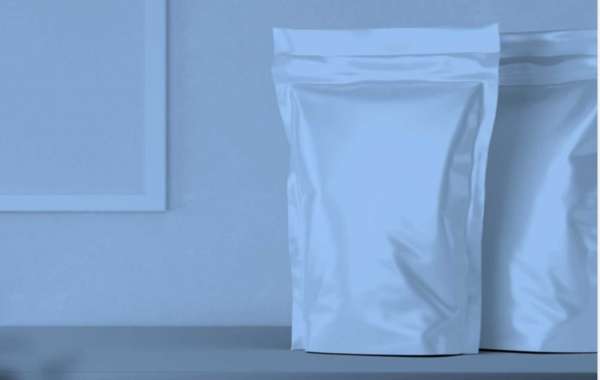The global Oxygen Scavengers Market is projected to reach $4,318.4 million by 2031 from $2,324.4 million in 2021, growing at a CAGR of 6.4% during the forecast period 2022-2031.
The function of oxygen scavengers is to limit the amount of oxygen available for deteriorative reactions, which may lead to reduced functionality of many types of products, including food and beverages, pharmaceuticals, chemicals, and others. Oxygen scavengers are expected to be more valuable as packaging becomes technologically advanced. Oxygen scavengers are critical elements for the rapidly expanding food and beverage sector. Growth in the oxygen scavengers market is being driven by the increasing usage of oxygen scavengers in active and intelligent packaging and technological developments related to the use of oxygen scavengers.
Market Lifecycle Stage
The oxygen scavengers market is still in the growing phase for food and beverages and pharmaceutical applications owing to ongoing development in these industries; however, for applications such as oil and gas and chemicals, the market is comparatively in its mature stage. The market is expected to benefit from the growing focus on stringent government rules and regulations by regulatory organizations in various regions and countries, as oxygen scavengers are widely utilized for extending the shelf life of food and pharma products, thereby improving the quality of packaged products. Increasing awareness amongst the consumers related to the food quality is expected to create potential market demand for oxygen scavengers.
Industrial Impact
- With an increased worldwide focus on achieving zero wastage, the shift toward sustainable technologies brings significant sales and financing opportunities in active and intelligent packaging. This shift was prominently experienced in regions and countries such as North America, Europe, the Middle East, and some Asian countries.
- Furthermore, oxygen scavengers have a moderate to high impact on food and pharma applications; however, in the upcoming future, with increased awareness amongst the consumers related to food quality, the impact is anticipated to increase.
Impact of COVID-19
The COVID-19 pandemic considerably impacted the production of oxygen scavengers as a result of country-wide shutdowns of manufacturing sites, labor shortages, and disruptions in supply and demand chains globally, which distorted the market. The supply of oxygen scavengers declined in industrial sectors such as chemicals and oil and gas, while it had a positive impact on the food and pharma packaging sector. Pharmaceutical sales grew drastically during the pandemic period, which boosted the sales of oxygen scavengers. During recovery, with increased research and development activities and the increased need for sustainable packaging, the demand for oxygen scavengers is anticipated to be robust.
Market Segmentation:
Segmentation 1: by End User
- Pharmaceuticals
- Food and Beverages
- Chemicals
- Oil and Gas
- Others
Food and beverages are anticipated to be one of the prominent end-use markets for oxygen scavengers during the forecast period 2022-2031.
Segmentation 2: by Form
- Canisters
- Sachets
- Stickers
- Resin
- Liquid
- Others
Based on form, the oxygen scavengers market is estimated to be led by sachets during the forecast period 2022-2031.
Segmentation 3: by Type
- Organic Oxygen Scavengers
- Inorganic Oxygen Scavengers
Based on type, the oxygen scavengers market is estimated to be led by inorganic oxygen scavengers during the forecast period 2022-2031.
Segmentation 4: by Region
- North America - U.S., Canada, and Mexico
- Europe - Germany, France, Italy, Spain, and Rest-of-Europe (RoE)
- China
- U.K.
- Asia-Pacific and Japan - Japan, India, South Korea, and Rest-of-Asia-Pacific
- Rest-of-the-World - South America and the Middle East and Africa
China is expected to lead the oxygen scavengers market throughout the forecast period, owing to the presence of a significant number of food, pharmaceutical, and chemical manufacturers in the region.
Recent Developments in Oxygen Scavengers Market
- In September 2017, SUEZ Group acquired GE Water Process Technologies for around $3.4 billion. This transaction is a group’s strategy for expanding its offering for industrial clients, reinforcing its international footprint, and boosting digital and innovation platforms, especially for oxygen scavengers.
- In 2019, Indorama Ventures completed the acquisition of a 100% stake in the PET business of INVISTA Resins and Fibers GmbH, Germany. The acquisition provides Indorama with competitive advantages, obtaining the intellectual property rights of POLYSHIELD PET and OXYCLEAR Barrier PET, Invista’s barrier technology, in all markets globally.
- In 2021, Solenis was acquired by Platinum Equity from Clayton, Dubilier Rice (CDR) and BASF in a transaction worth $5.25 billion. As part of the acquisition, Solenis merged with Sigura Water, an existing Platinum Equity portfolio company, for a total combined transaction value of approximately $6.5 billion. The company generates a combined revenue of approximately $3.5 billion.
Demand - Drivers and Limitations
Following are the demand drivers for the oxygen scavengers market:
- Rising Awareness amongst the Consumers related to Food Quality
- Rising demand for Convenience Foods and Active Food Packaging
- Increasing developments in Pharmaceutical Industry
The market is expected to face some limitations due to the following challenges:
- Hazards Associated with Chemicals in Oxygen Scavengers to Human Health and Potential Threat to Efficiency of Steam Generation Process
- Inconvenience Associated with Oxygen Scavenger Sachets in Food Packaging
Get Free Sample - https://bisresearch.com/requestsample?id=1382type=download
Key Market Players and Competition Synopsis
The companies that are profiled have been selected based on inputs gathered from primary experts, analyzing company coverage, product portfolio, and market penetration.
Based on form, the sachets segment is expected to lead the oxygen scavengers market and capture around 42.4% of the market as of 2021. Players utilizing other forms, including resin, accounted for around 22.5%, canisters accounted for 15.2%, liquid accounted for around 12.0%, stickers accounted for approximately 2.1%, and other forms of oxygen scavengers accounted for less than 5.9% of the total demand in 2021.
Some of the prominent established names in this market are:
Company Type 1 (by Form): Canisters
- Mitsubishi Gas Chemical Company
- Multisorb Technologies
Company Type 2 (by Form): Sachets
- Mitsubishi Gas Chemical Company
- Clariant AG
- Multisorb Technologies
- TPG CO., LTD.
- Desiccare, Inc.
Company Type 3 (by Form): Stickers
- Mitsubishi Gas Chemical Company
- Multisorb Technologies
Company Type 4 (by Form): Resin
- Clariant AG
- Avient Corporation
- Indorama Ventures
- Sherwin-Williams Company
Company Type 5 (by Form): Liquid and Others
- BASF SE
- Arkema
- SUEZ Group
- Accepta Water Treatment
- Schlumberger Limited
- Eastman Chemical Company
Companies that are not a part of the previously mentioned pool have been well represented across different sections of the report (wherever applicable).
How can this report add value to an organization?
Product/Innovation Strategy: The product segment helps the reader understand the different forms and types involved in the oxygen scavenger market. The form segment includes sachets, canisters, stickers, resin, liquid, and others, while the type segment includes organic oxygen scavengers and inorganic oxygen scavengers. Moreover, the study provides the reader with a detailed understanding of the oxygen scavengers market based on end user (food and beverages, pharmaceuticals, oil and gas, chemicals, and others). The government’s need for more environment-friendly methods to prevent packaging wastage problems is fuelling the demand for oxygen scavengers.
Growth/Marketing Strategy: The oxygen scavengers market has seen major development by key players operating in the market, such as business expansions, partnerships, collaborations, mergers and acquisitions, and joint ventures. The favored strategy for the companies has been business expansions and acquisitions to strengthen their position in the oxygen scavengers market. For instance, in July 2020, Avient acquired the color masterbatch businesses of Clariant. The masterbatch business includes around 46 manufacturing operations and technology centers in 29 countries and approximately 3,500 employees.
Competitive Strategy: Key players in the oxygen scavengers market analyzed and profiled in the study involve oxygen scavenger manufacturers and the overall ecosystem. Moreover, a detailed competitive benchmarking of the players operating in the oxygen scavengers market has been done to help the reader understand how players stack against each other, presenting a clear market landscape. Additionally, comprehensive competitive strategies such as partnerships, agreements, acquisitions, and collaborations will aid the reader in understanding the untapped revenue pockets in the market.
Analyst Thoughts
According to Sachin Singh, Lead Analyst, BIS Research, "Oxygen scavengers are widely used in the food and pharma industry for packaging owing to increasing awareness related to sustainable packaging solutions. Moreover, oxygen scavengers are used as corrosion inhibitors for feed and boiler water treatment in oil and gas and chemical industries. With the increased replacement of traditional packaging methods with oxygen scavengers-based active packaging, wastages are expected to decline substantially, thereby bolstering the growth of the oxygen scavengers market.”
BIS Research Offerings - https://bisresearch.com/our-offerings/subscriptions
You May Also Like -









